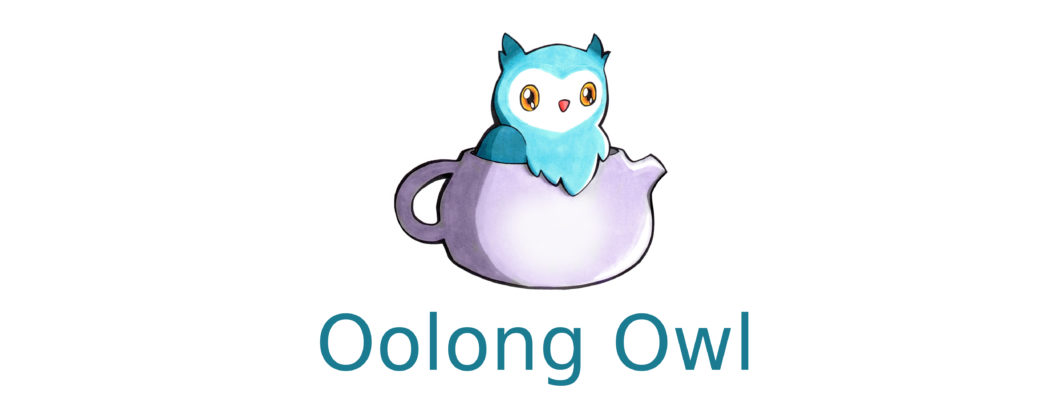I am lucky enough to have a bunch of samples from Cameron Tea, who has multiple grades and varietals of the same tea. Today is a comparison of Sun Moon Lake, both competition grade, but different varietals – Ruby (TTES No. 18) and Assam (Assamica varietal from India Jaipur). Dang, I just realized they also have a Sun Moon Lake Formosa varietal as well – next time!

Dry Leaf and Steeping Method
For all photos, the Ruby is on the left, Assam on the right. Leaf wise, the two teas look pretty darn close. The Assam seems lighter as there is more leaf there, but I can’t tell between the two visually.
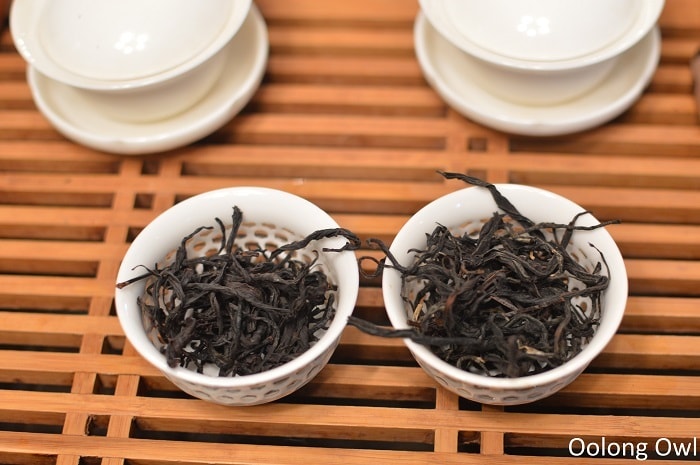
I followed the same steeping instructions and times for both – I used 1 gram of leaf to 15ml of vessel, boiling water.
Comparison Tasting of Cameron Tea’s Sun Moon Lake Ruby 18 and Assam Varietal
Scent wise, the Ruby is WOW super fruity smelling! The scent is very potent, sweet and fruity, and what I wish fruit snacks tasted like, now that I’m an adult and don’t want that fake red flavor. The Assam smells different as it has malty like, fruity and sweet scent.
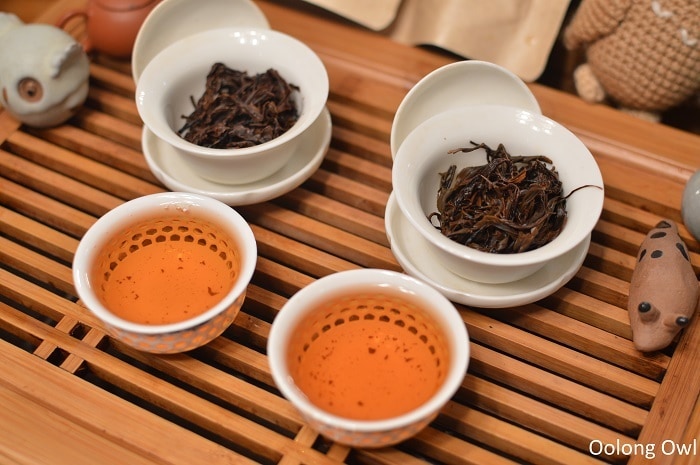
First, Second, Third, and Fourth Infusion: First off, I can really taste that competition style. It always has that quality of bright, sharp, in your face, yet delicate in notes.
Ruby – This is sweet, very fruity and slightly woodsy. There is a mouth watering sweet finish that makes you drool, and drool for a long time as the aftertaste lasts awhile. The notes are like mystery super sweet ripe red berries, cedar wood, and this crystalline clean sharp mineral essence. The texture is slippery, but the flavor is delicate yet sharp. Like very perky miniature owls armed with toothpicks, quick to stab you if you point at them. This tea has a very strong scent, it is penetratingly fruity and sweet, giving you a double whammy.
Assam – Very different than the ruby! The feel is heavy and full of bass, hitting my body like a gut punch. The body is also slick and snuggly. The flavor is also sharp, but the notes are mellow in essence – like sweet orange (without the refreshing zest or tart), kabocha squash, dark wood, and slightly floral. The finish is dark, almost brisk and malty. This tea is like waiting at a red light and a pair of Tea Owls cruise up in their lowered car, and their music bass is making your own car rattle.
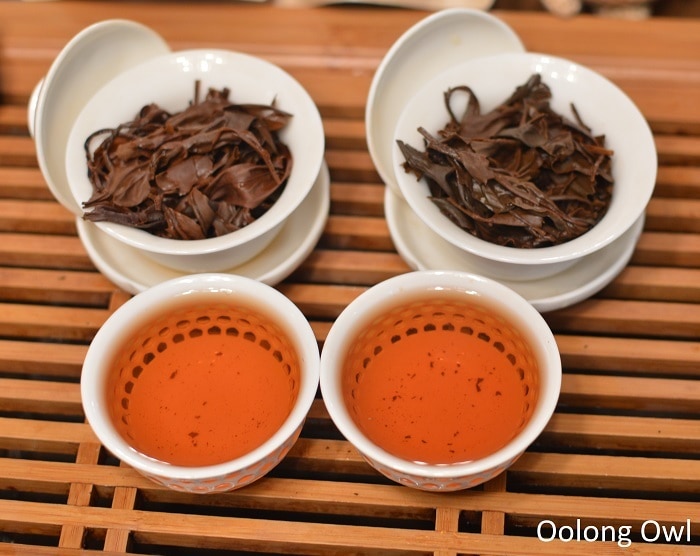
Fifth, Sixth, and Seventh Infusion:
Ruby – To stress how much smell is important to this tea, this is a tea that as you bring to your face and before you sip, you can smell it – it wafts in and makes your eyes spiral. This has gotten sweeter and more melded into a mess of currant, wood, and tart dryness. I admit, I like the smell more than the taste here. I would just huff this tea all day and be happy.
Assam – This is where this tea started to shine. The flavor also melded, getting more sweet squash, little bready, fruity and sweet. Oddly, this one is more fruity in this state. Very interesting flavor here as it isn’t as dry as the ruby, but goes an interesting direction of comfort food of the high level, like high end cuisine cooking frozen chicken fingers into magical.


Eighth Infusion: I did a 15 min steeping, as both were getting a bit weak and astringent.
Ruby – This one is light on fruity, but bitter from the long haul infusion. It is sharp, splintery wood and berrylike, reminding me of the smell of these weird wild blackberries I’ve been picking on the side of the road here in Seattle. This tea is done as it is just not drinkable due to the heavy bitter.
Assam – this tea held up. It isn’t bitter, but it is quite dry. The flavor is quite fruity, but more on the citrus side. It finally lost that mellow squashy flavor, going more refreshing. This tea finished much better, and took the beating of owl tea steeping.
Hopefully the camera picked it up, but you can see a slight more warmness to the Ruby, whereas the Assam has a bit more green/cool tone to it. Otherwise, I really can’t tell the difference.
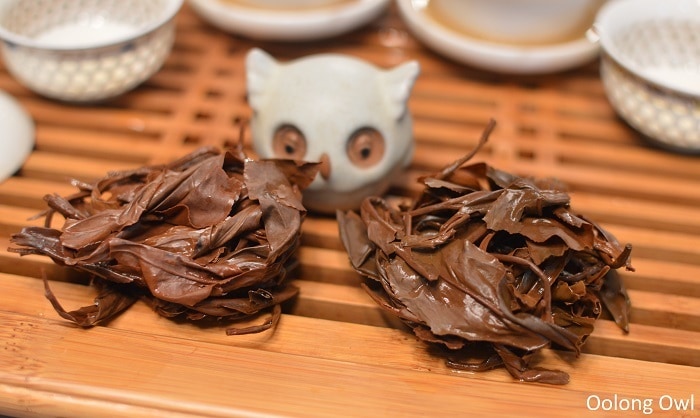
Comments
Drinking these teas from Cameron Tea made for an interesting comparison and ties together the time I had black Taiwanese teas labelled Ruby 18/Sun Moon Lake, but tasted very different. Varietal is one of those things not many tea sellers list, and personally something I am still exploring to taste. You definitely can taste the difference despite the same processing! An important lesson here is you can buy a tea you think you know, but if you end up with a different varietal you will be in for a surprise!
I found the Ruby varietal the flavor I associate with Sun Moon Lake. Likely it is the one I’ve tasted the most commonly, but I have also come across more bready, malty Taiwanese blacks. I personally prefer the Ruby as the scent is just nuts and the flavor sweet, but both are great and mood/season heavy. Ruby feels like spring/summer with all the ripe berries out and pigging on, whereas the Assam is autumn pumpkin comfort. They were certainly teas you don’t steep forever, both didn’t last long and right away you got great flavor and in the Ruby’s case – crash and burn in the end. Either way, these are excellent Sun Moon Lakes – both were just wow eye opening on how fragrant, flavor note complex, and bright. I personally would drink this again more for comparison than anything, as education from them is high, but they would be great for an all out tea party or special occasion.
For the quality – this is competition tea. Both were just packed with flavor and excellent drinkers. Cameron Tea has some fantastic teas that I got some weird quirk of hording samples of. They are mostly wholesale, but they do have some on sale on their website.
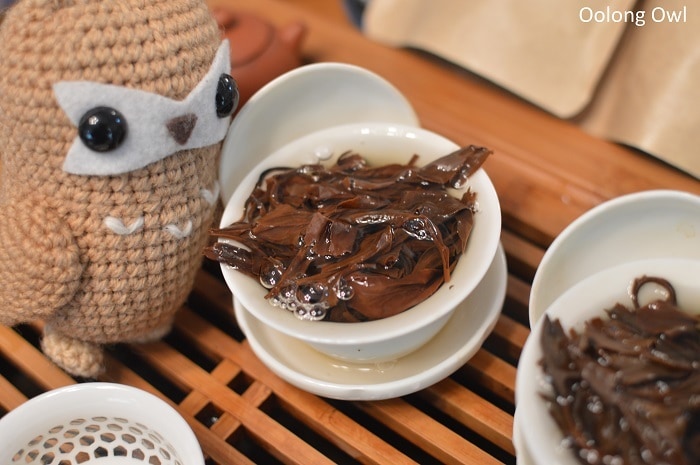
I keep mentioning competition style tea. You know what would be cool? Comparing it to non competition style tea. I can make that happen sometime in the future.
(tea provided for review)





